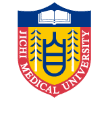

Jichi Medical University, Center for Molecular Medicine
Division of Cardiology and Metabolism
Oxygen is an essential gas component to keep our lives. Each cell or organ consumes molecular oxygen and generates ATP, an energy currency which is required for each cellular function. Hypoxia is a condition where tissue oxygen concentration drops below its physiological level. Tissue hypoxia occurs in several pathological conditions including cardiovascular disorders or anemia. A pair of transcription factor, hypoxia inducible factors (HIF) are stabilized in hypoxic environment, and induce the expression of hypoxia responsive genes. We have found that HIF signaling regulates macrophage intracellular metabolism, leading to the activation or resolution of inflammatory processes.
Fibroblasts and macrophages exist in the interstitial space, and play key roles in tissue remodeling such as cardiac fibrosis or tumor development. Recently, we found that fibroblasts and macrophages can survive in hypoxic environment. Unexpectedly, these interstitial cells are even more activated in ischemic environment, which is contradictory to our understanding that oxygen or ATP is required for the cellular functions. We now name this finding as “oxygen paradox in interstitial cells”.
We also found thermal environment significantly affects cellular oxygen homeostasis. Bioenergetic study of the link between cellular function and its metabolism will give us new insights into the understanding disease progression processes.
NEWS